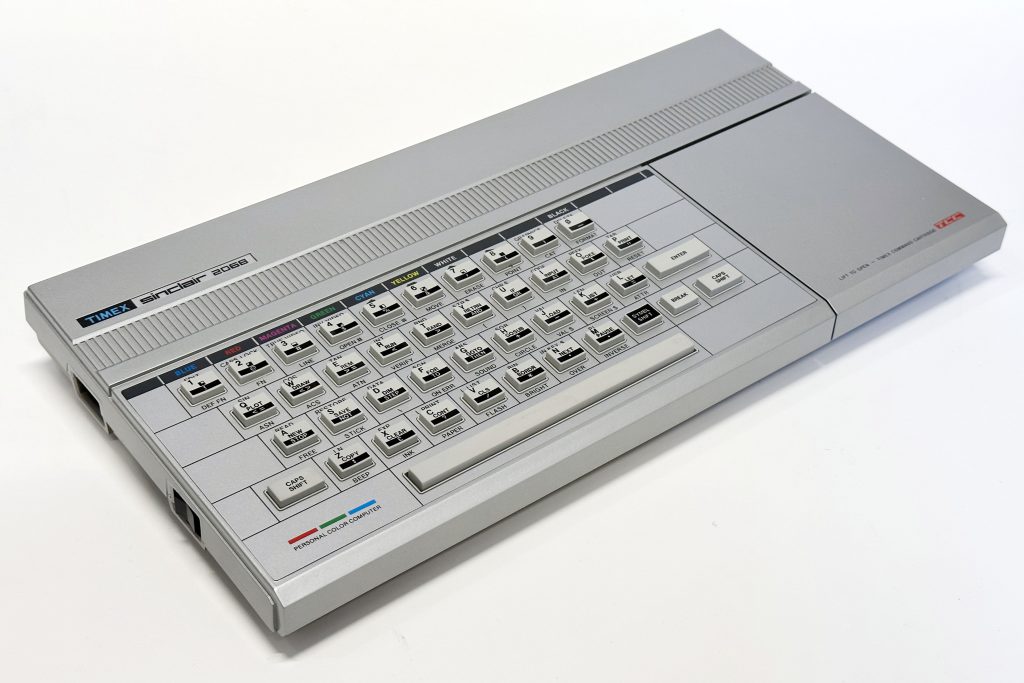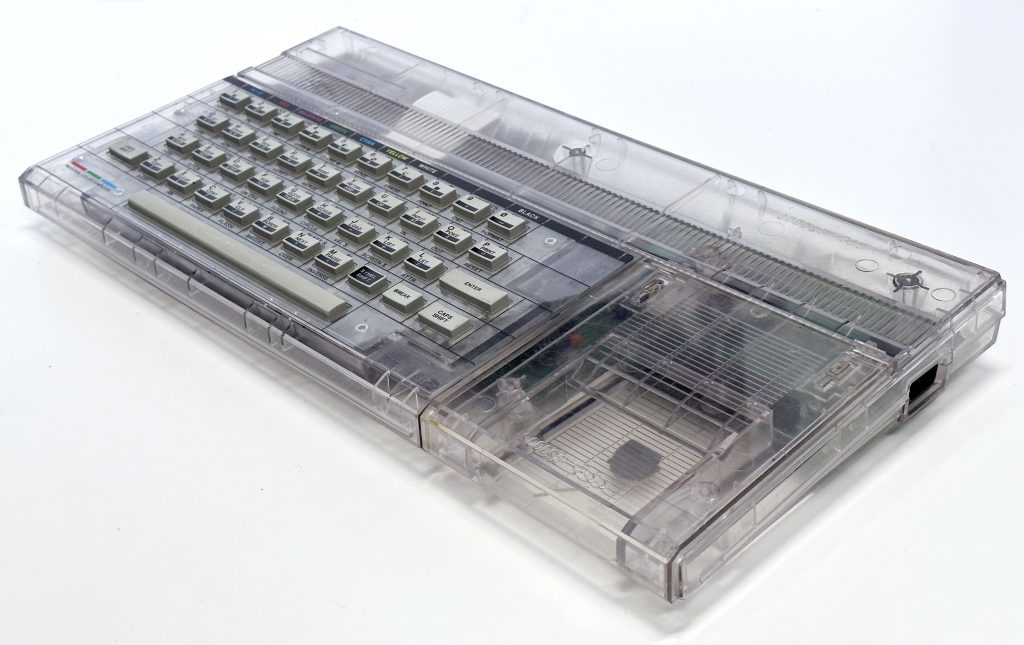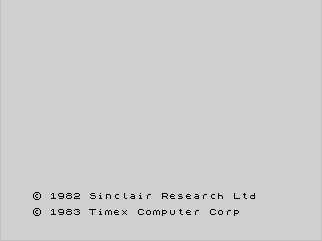TIMEX Sinclair 2068

The TS2068 was the big Spectrum of Timex for the USA marker. It was released in Fall of 1983 just before Timex Computer Corp folded in the Spring of 1984.
It was developed because it became clear the the ZX Spectrum would not pass the FCC certification needed and also Timex recognized that it would not be a competitive machine in North America for long. So changes needed to be introduced and Timex opted to design a more expansive computer system.
Originally to be released as the TS2048 with 16K RAM and TS2072 with 48K RAM, the fact is that someone made a mistake on a press release picture (which we have in the museum!) and it ended up being called the TS2068.
Crystal clear cases were manufactured to ensure everything was well made before mass production.

Timex re-organized the Spectrum’s 16K ROM by adding more commands (STICK, SOUND, RESET, FREE, ON ERROR, DELETE) to ZX BASIC so the new built-in hardware could be used from BASIC (joysticks and the AY-3-8912 sound generator).
Because Timex added more commands, the ROM could not fit on 16K so an 8K ROM was added. Timex moved some of the original ZX BASIC commands to this new 8K ROM, making programs that used ROM routines unusable. BASIC programs work with no problems. With this change, only about 7% of Spectrum Software would work on TS2068.
To help understand how the TS2068 worked, Timex made a very good user manual that explained all BASIC commands and functions with simple programs. Also included some technical information.

TS2068 introduced the Command Cartriges, solid state software, that allows software on ROMs that instantly loads upon powering up the computer. Users learned how to make a cartridge with a Spectrum ROM and make it bank switch with the 16K TS2068 Home ROM so it worked as a Spectrum. With this cartridge, users would raise the TS2068’s Spectrum compatibility to 97%. With the delays and rush to the market, the TS2068 ROM ended unfinished with several codes unused on ROM but unusable. The BASIC interpreter accepts some commands with “weird” arguments, some very similar to ZX Microdrive commands.
The memory bank switch was advanced for its time as it had an 8K window that could theoretically address 256 64K memory (RAM/ROM) banks. Since the screen and the stack for the bank switch mechanism uses the first 8K RAM, only 56K would be available per bank.
Timex pulled the plug in North America and Timex Portugal, no doubt encouraged by the Spectrum’s popularity in Europe, introduced some improvements into the TS2068 and adapted in to became the TC2068. Then they made their own version of 48K Spectrum, the TC2048. TC2068 and TC2048 were very popular in Portugal.

Features of the TS2068:
- Z80A processor @ 3.58 Mhz
- AY-3-8912 Sound Chip (same as 1986’s 128K Spectrum) clocked at 1.76475Mhz. It is connected to different ports compared with the Spectrum, so no AY music when playing Speccy games. Because the clock rate is different, the AY sound will sound slightly different from the Spectrum.
- 24K ROM (16K+8K) BASIC. Same as 48K Spectrum with more commands (SOUND, STICK, ON ERROR, RESET, FREE, DELETE)
- 48K RAM
- Memory bank switch: Memory can be bank switched in 8K chunks between the three internal 64K memory banks called the HOME bank (16K ROM, 48K RAM), the EXROM (8K ROM; this one is not completely decoded and can only hold 8K) and the DOCK bank which is empty and is reserved for cartridges.
- Cartridge dock that is located under a door on the right side of the computer.
- Two joystick connectors (not compatible with any Sinclair joystick)
- Composite video available on the jack. RGB signals are available on the rear edge connector.
- Runs on 15V instead of 9V like Sinclair ZX Spectrum.
- 32×24 / 64×24 character screen
- 68-pin custom Gate Array (SCLD) capable of the following video modes
- 256×192 pixel, 32×24 attributes (Spectrum screen)
- 256×192 pixel, 32×192 attributes (extended color mode)
- 512×192 pixel, monochrome
- Dual screen mode where you could flip between two Spectrum screens.
